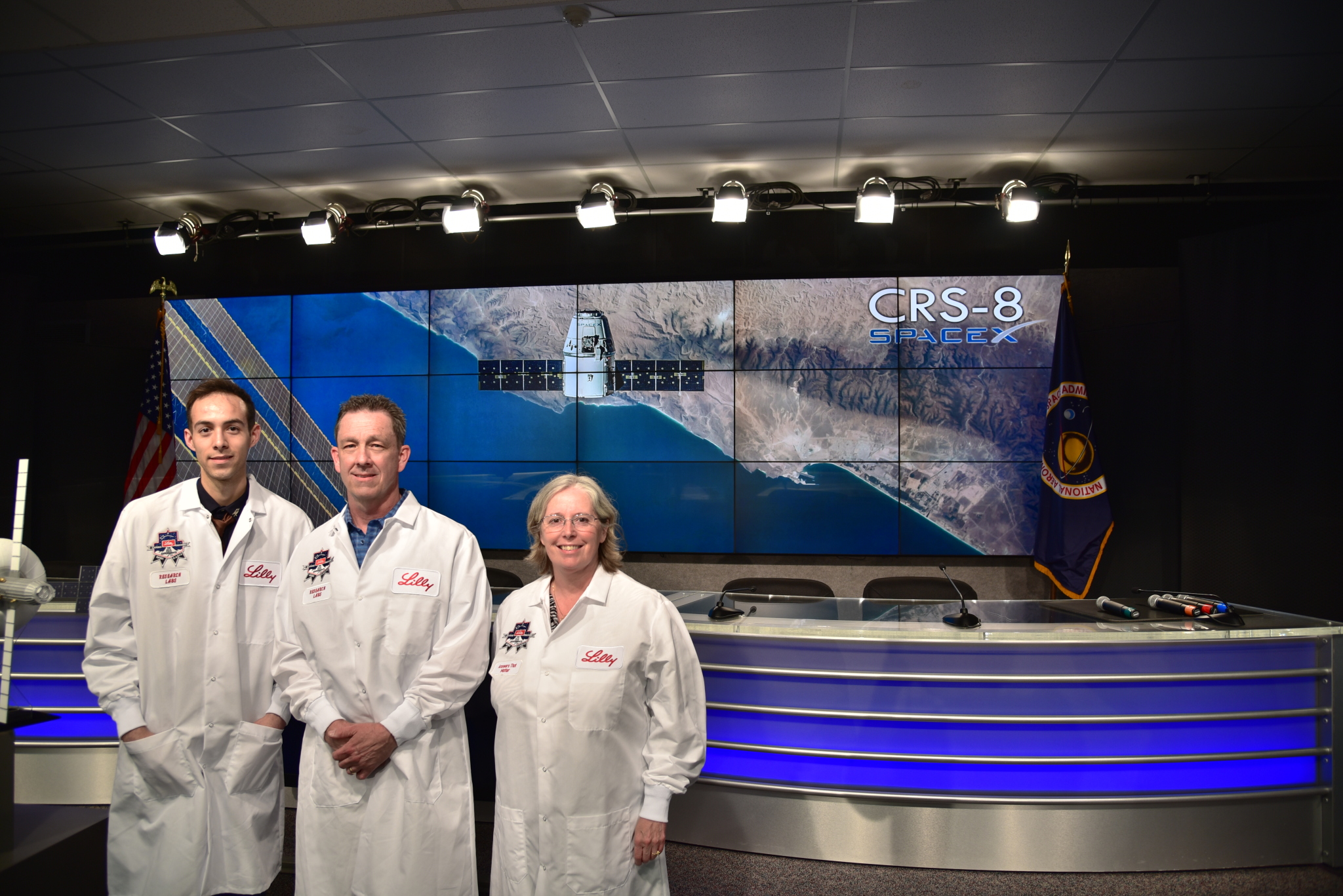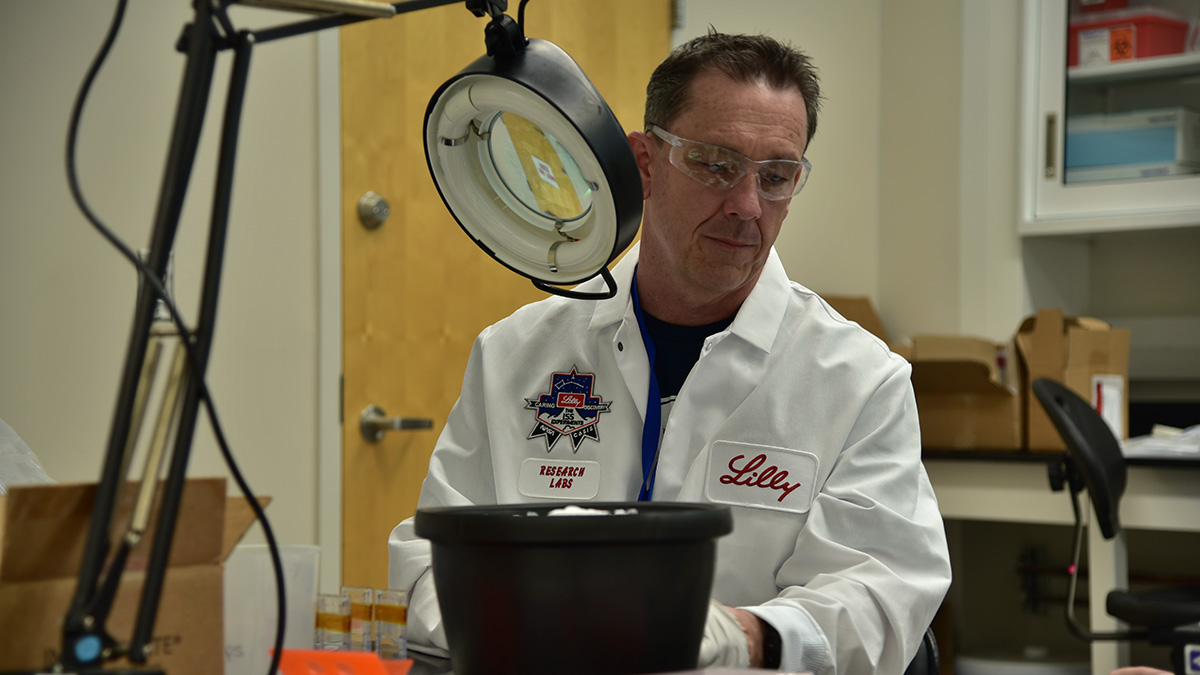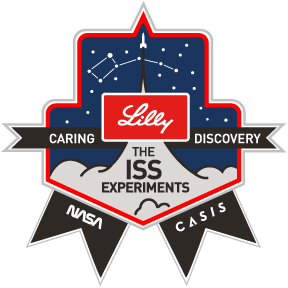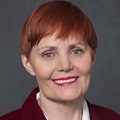There's A Pharma Waiting In The Sky: Lilly In Space
Executive Summary
NASA's orbiting laboratory on the International Space Station has allowed researchers from drug manufacturers like Eli Lilly & Co. to find solutions in space to certain obstacles they've struggled with on Earth, potentially helping the firms get their investigational medicines to the marketplace sooner.
Eli Lilly & Co. is an innovator engaged in a constant hunt for new therapeutic discoveries aimed at improving human life on Earth.
Lately, however, it's been pursuing that mission more than 240 miles above the Earth with a set of experiments aboard the International Space Station (ISS) under a partnership with the National Aeronautics and Space Administration (NASA) and the Center for the Advancement of Science in Space Inc. (CASIS), which manages the ISS US National Laboratory.
The orbiting lab's microgravity environment, said Kris Gonzalez-DeWhitt, a scientist in the Structural Biology Group at Lilly, allows the company's researchers to get around certain obstacles they've struggled with on Earth, potentially helping the firm get its investigational medicines to the marketplace sooner.
Gonzalez-DeWhitt and his colleague Michael Hickey, a senior scientist at Lilly's San Diego lab, had related, but distinctively different, crystallization experiments on the ISS – the samples of which both returned to Earth on May 11 aboard the SpaceX Dragon spacecraft, which carried more than 3,700 pounds of cargo, including samples from numerous other scientific and technology demonstration projects.

Lilly space scientists Kris Gonzalez-DeWhitt, Michael Hickey and Rosamund Smith
The Dragon flight also carried the final batch of human research samples from former NASA astronaut Scott Kelly's historic yearlong mission in space, which will be analyzed as part of the Twins Study – an investigation involving Kelly's twin brother Mark, also a former NASA astronaut, who remained on the ground over that period (Also see "A Life Sciences Fortuitous Opportunity: NASA's Twins Study" – Scrip, 09 Mar, 2016).
Gonzalez-DeWhitt's and Hickey's experiments successfully rode into space on April 8 as part of the 7,000 pounds of supplies and scientific cargo on the Dragon atop the Falcon 9 rocket, arriving to the ISS on April 11 – SpaceX's eighth commercial resupply services mission, or CRS-8.
While drug makers are responsible for funding the costs of their ISS experiments, the US government pays for sending them into space, along with covering the costs for the lab operations and astronaut crew time, plus bringing the project samples back to Earth – an expense that amounts to about $7.4m on average, which is not passed along in any way to the investigators or their sponsoring companies or organizations, CASIS told Scrip. (Also see "Pharma's Space Frontier: Come On And Take A Free Ride" – Scrip, 07 Mar, 2016).
Along with Lilly, Merck & Co. Inc. and Novartis AG are among the biopharma companies that have taken advantage of the opportunity to have their drug research and development-related projects on the ISS at one point or another.
Crystallization Experiments
Gonzalez-DeWhitt's and Hickey's experiments, known as CASIS Protein Crystal Growth (PCG) 4-1 and 4-2, have applications in medicine – specifically, drug design and development.
"Both of us are trying to pursue a question related to structured-based drug design and how protein crystallography can enhance medicinal chemistry for a specific target," Gonzalez-DeWhitt said in an interview.
"The targets that we used in our crystallization experiments are all very much going to be medically relevant," he added.
Gonzalez-DeWhitt noted that scientists build three-dimensional crystals to understand how proteins are built and how they work, making it possible to study the protein's physical structure using X-rays.
But it's not easy getting those crystals to form, he explained.
During an April 7 NASA media briefing, Hickey noted that growing protein crystals in microgravity can avoid some of the hurdles inherent to protein crystallization on Earth, such as convective mixing and sedimentation during the equilibration process.
As a result, the growing crystal lattice can accumulate defects and irregularities that can negatively affect crystal diffraction – as can be evidenced by a net higher mosaicity and lower resolution limit, he said.

Lilly space scientist Michael Hickey preps his crystallization experiment for the International Space Station
"In space, growing these crystals with compounds together where they bind to each other will enable us to get past current roadblocks that we have on Earth," he said.
Hickey's investigation, CASIS PCG 4-2, is exploring the effect of microgravity on the co-crystallization of a membrane protein with a compound to determine its three-dimensional structure, which will enable scientists to use designer compounds to chemically target and inhibit an important human biological pathway thought to be responsible for several types of cancer.
Gonzalez-DeWhitt pointed out that Hickey's experiment is only the second conducted in space around a membrane protein.
"So that's pretty exciting," he told Scrip.
For his experiment, CASIS PCG 4-1, Gonzalez-DeWhitt said he's endeavoring to crystallize a soluble protein, which he said has proven very difficult to crystallize on Earth.
"I'm able to get crystals, but these crystals cannot diffract well enough in order for scientists at Lilly to understand and model how these investigational medicines are interacting with the protein, and so because of that, we have some limitations and so we're sort of a little bit in a quandary about how to proceed," he explained. "And so we are looking to a microgravity environment as a potential means to improve the crystallization, hoping we'll be able to get more ordered crystals, which we can then use to understand how some of our investigational medicines are interacting with the protein, and we can model how that medicine is binding or causing conformational changes in the protein."
"When the crystals are much larger, it's much easier for us to handle and manipulate," Gonzalez-DeWhitt added.
He likened it to the difference between watching a hockey game on a 29-inch standard-definition television to one that's 69-inches in size with high-definition resolution.
On the 29-inch TV, most people are able to only see the general movements of the hockey players. But on the much larger 69-inch TV, "you can see the puck, the players' sweat and all their facial expressions," Gonzalez-DeWhitt declared. "That's the difference we are hoping to get in the microgravity environment – the 69-inch high-definition, high-resolution image of how this potential investigational medicine is interacting with the proteins."
Gonzalez-DeWhitt said he and Hickey pioneered a commercially available 96-well plate they modified in "very specific ways" for the space project, which they're hoping, if successful, will lead to many more crystallization experiments beyond what scientists are able to do with currently approved hardware.
"The longer impact of what we are doing might enable other future experimenters to design their experiments to have a more robust high-throughput crystallization program on the International Space Station for the community of crystallographers," he said.
Lilly's collaboration on the crystallization projects with NASA and CASIS, Gonzalez-DeWhitt said, was a "fantastic opportunity," in which the two agencies have been "very accommodating" to the drug maker and its investigators.
Other Lilly ISS Experiments
Lilly researcher Rosamund Smith also sent an experiment up on the SpaceX CRS-8 flight, although her six-week project currently remains on board the ISS.

For her experiment, Smith is investigating myostatin inhibition in preventing skeletal muscle atrophy and weakness in mice exposed to long-duration spaceflight – a study known as Rodent Research-3.
Smith noted during the NASA briefing last month that space provides a unique research environment because microgravity's effects on physiology can mimic the process of aging and some diseases in humans on Earth, including muscle atrophy and the loss of bone mineral density, especially in the legs and spine.
She said the results of her experiment are expected to have implications not only for long-term space flight – like those potentially to Mars – but also for patients on Earth with muscle wasting diseases, like amyotrophic lateral sclerosis, muscular dystrophy and certain cancers.
Smith said the microgravity environment has allowed her to study the "global effect" of muscle wasting on mice – something she said she's not able to examine on Earth.
She said her experiment also is measuring the function of muscles rather than just their size in the mice.
Lilly also plans to send an experiment up to the ISS in June aboard SpaceX's CRS-9 flight examining how certain materials used in the pharmaceutical industry dissolve in water while in microgravity.
The company said the results from that investigation could help improve the design of tablets that dissolve in the body to deliver drugs, thereby improving the design of medicines used in space and on Earth.
Lilly has a fourth ISS project expected to go into space sometime in late summer – potentially in August – in which the firm's scientists are examining the effects of microgravity on lyophilization, or freeze-drying.
The collaboration with NASA and CASIS, Lilly spokeswoman Amy Sousa told Scrip, is a "credit to our leaders and to the scientists who have a passion to moving the science forward."
"Our scientists are amazing," she declared.
